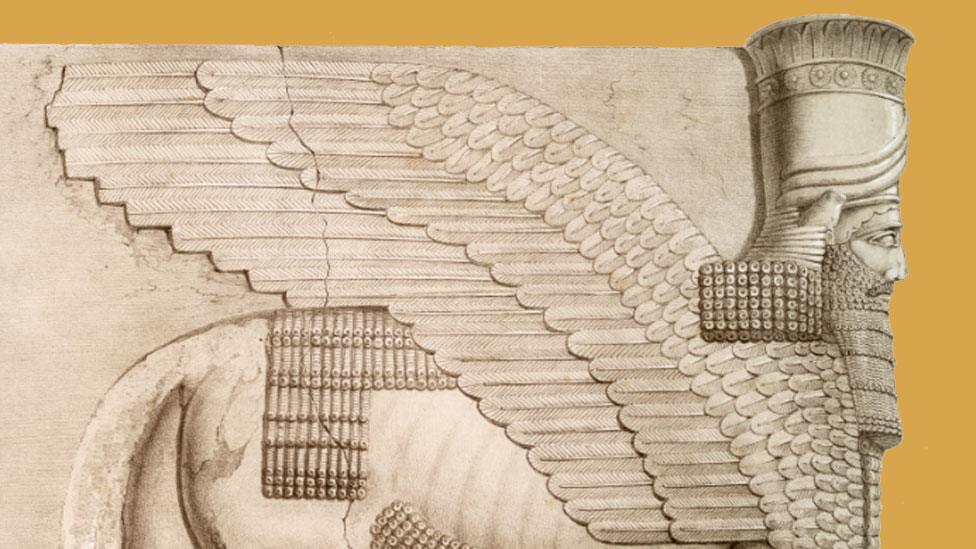Mashki Gate: Stunning ancient rock carvings found in Iraq
- Published
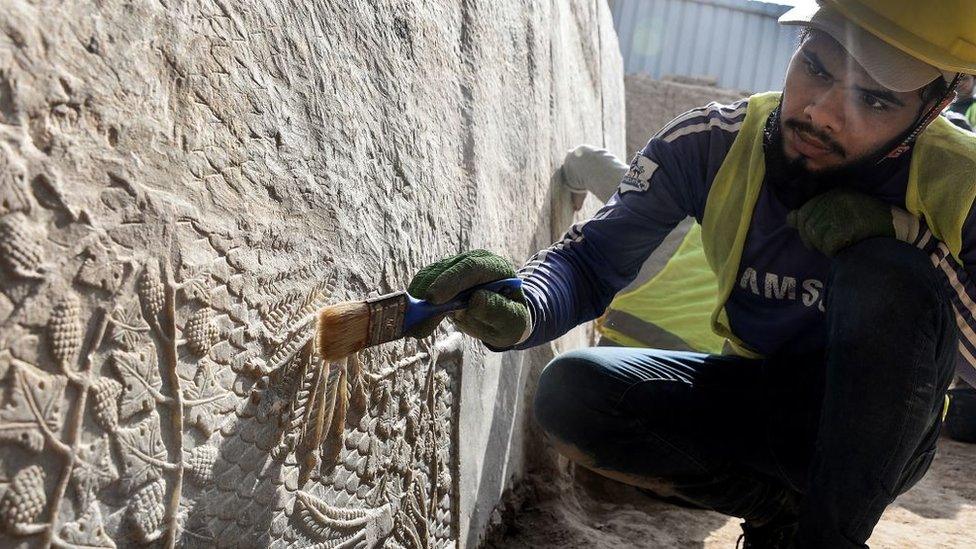
Archaeologists in northern Iraq have made an exciting discovery - unearthing beautiful rock carvings that are about 2,700 years old.
They were found in Mosul by a US-Iraqi excavation team working to reconstruct the ancient Mashki Gate, which Islamic State (IS) militants destroyed in 2016.
Iraq is home to some of the world's most ancient cities, including Babylon.
But years of turmoil have seen many archaeological sites looted and damaged by militants and military action.
The eight marble reliefs show finely chiselled war scenes, grape vines and palm trees.
They date back to the Assyrian King Sennacherib, who ruled the ancient city of Nineveh from 705 to 681 BC, the Iraqi State Board of Antiquities and Heritage said, in a statement seen by AFP.
The powerful king was known for his military campaigns, including against Babylon, and his vast expansion of Nineveh.
It is believed the relics once adorned his palace, and were then moved to the Mashki Gate, Fadel Mohammed Khodr, head of the Iraqi archaeological team, told AFP.
The Mashki Gate was one of the largest in Nineveh, and was an icon of the city's size and power. The gate was reconstructed in the 1970s, but was destroyed with a bulldozer by IS militants in 2016.
The militant group ransacked and demolished several ancient sites that pre-date Islam in Iraq, denouncing them as symbols of "idolatry".
Mr Khodr said that when the marble slabs were positioned at the gate, they were partly buried. The sections underground were preserved and bear the carvings seen today; whatever was above-ground was wiped smooth over the centuries.
The excavation team, which comprises experts from Iraq's Mosul University and the United States' University of Pennsylvania, is working to restore the Mashki Gate site to how it was before IS bulldozed it.
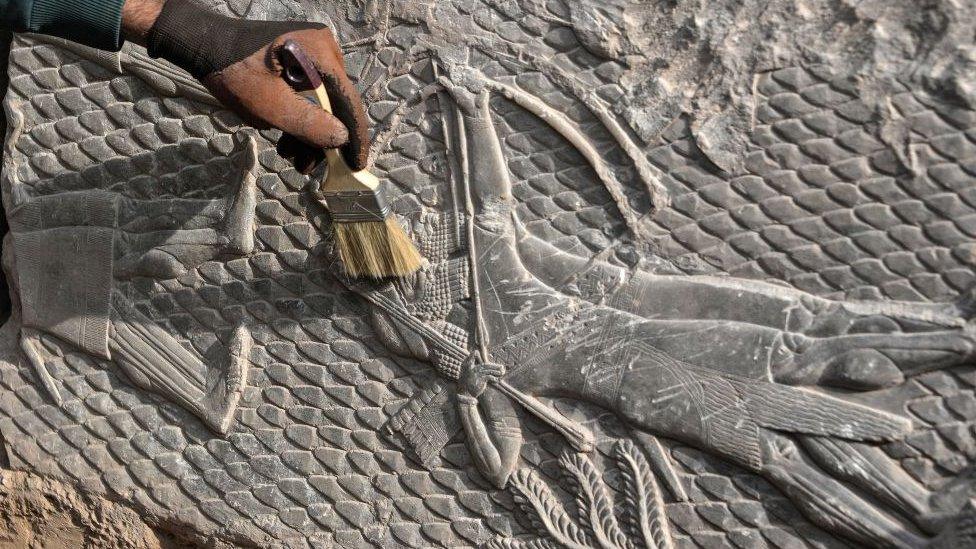
This carving shows an Assyrian soldier pulling back an arrow, ready to fire
More than 10,000 archaeological sites have been found in Iraq.
Neighbouring Syria is also home to treasured ruins, including the site of the ancient city of Palmyra, where the grand Temple of Bel was destroyed by IS. in 2015.
However it is not only militants, vandals and smugglers who have damaged archaeological sites in Iraq.
US troops and their allies damaged the ruins of Babylon when the fragile site was used as an army camp after the US invaded Iraq in 2003.
A 2009 report by Unesco, external, the United Nations cultural agency, found troops and their contractors "caused major damage to the city by digging, cutting, scraping, and levelling".
Related topics
- Published18 November 2016

- Published15 November 2016

- Published29 September 2017
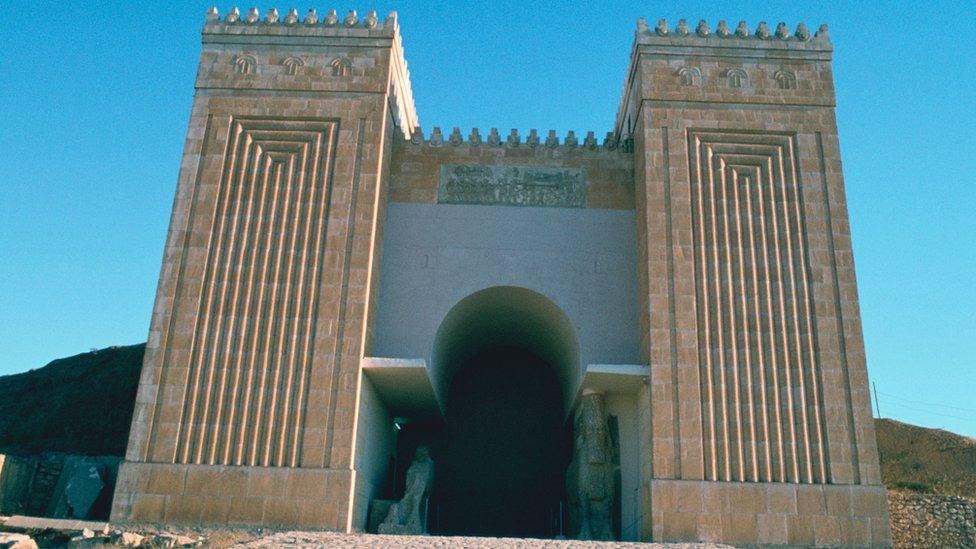
- Published22 March 2015
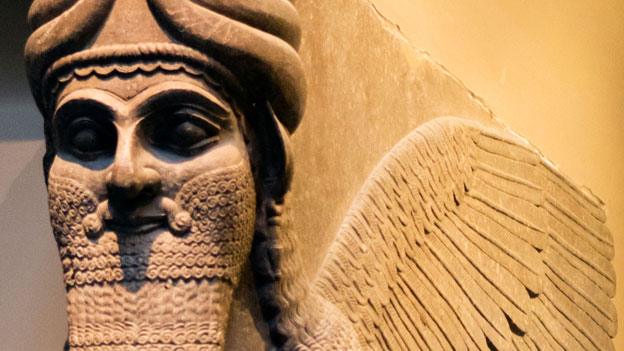
- Published29 February 2016
